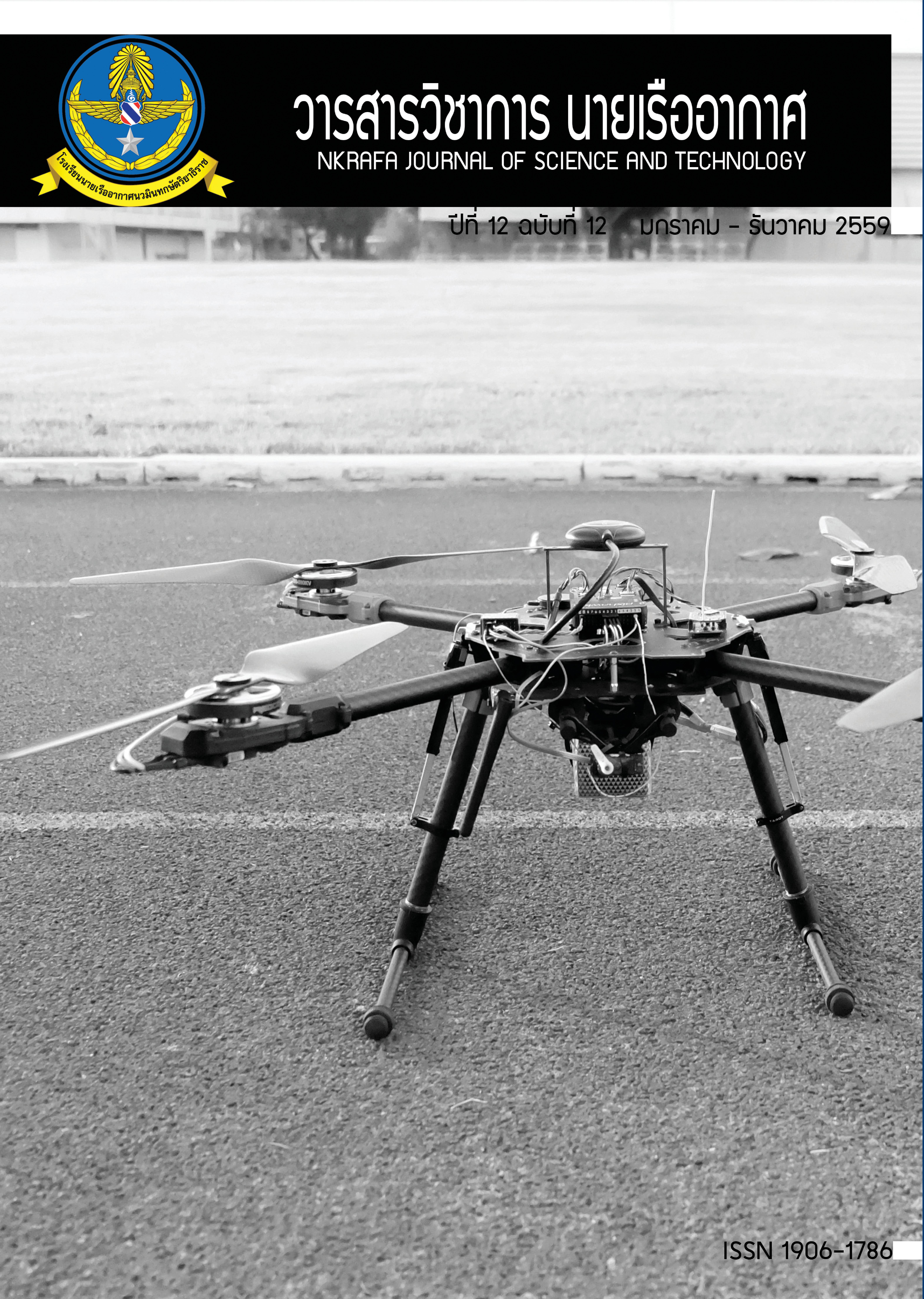Improving Face Detection with Bi-Level Classification Model
Main Article Content
Abstract
The event of unrest in the three southern provinces has long been a non-trivial burden to national security. The series of harmful acts causes a high-toll lost in both official and civilian lives, yet damages to personal as well as public possesssions. For some time, the government, espcially the Ministry of Defence, pays a great deal of effort to resolve the situation and restore peace in the area. This proves to be effective only to a certain extend, while car bombs and attacks on officials continue. The overall strategy set for this problem still lacks the synergy of advanced technology made available in academic and research communities. Intelligence acqusition and sharing seems to be the weak link in the ideal problem-solving scheme. This article reports an improvement made towards such end, with face recognition being exploited to identify individuals from CCTV images. The precision of this tool depends highly on the detected image area that is thought to be a human face. A benchmark technique to face detection is prone to errors, due to quality of magnitude of sample face positive and negative samples. To overcome this, a new bi-level model is proposed to improve accuracy and reduce the amount of false positives.
Article Details
- Content and information in articles published in NKRAFA Journal of Science and Technology are comment and responsibility of authors of articles directly. Journal editorial do no need to agree or share any responsibility.
- NKRAFA Journal of Science and Technology Articles holds the copyright of the content, pictures, images etc. which published in it. If any person or agency require to reuse all or some part of articles, the permission must be obtained from the NKRAFA Journal of Science and Technology.
References
[2] N. Iam-On and T. Boongoen. Improving Face Classification with Multiple-Clustering Induced Feature Reduction. In Proceedings of 49th IEEE International Conference on Security Technology: 241-246, 2015.
[3] T. Mita, T. Kaneko and O. Hori. Joint Haar-like features for face detection. In Proceedings of International Conference on Computer Vision: 1619-1626, 2005.
[4] N. Iam-On and T. Boongoen. Diversity-Driven Generation of Link-Based Cluster Ensemble and Application to Data Classification. Expert Systems with Applications, 42(21): 8259-8273, 2015.
[5] M.H. Yang, D.J. Kriegman and N. Ahuja. Detecting Faces in Images: A survey. IEEE Transactions on Pattern Analysis and Machine Intelligence, 24(1): 34-58, 2002.
[6] Y.Q. Wang. An Analysis of the Viola-Jones Face Detection Algorithm. Image Processing On Line, 4: 128-148, 2014.
[7] S.K. Pavani, D. Delgado and A.F. Fragni. Haar-like features with optimally weighted rectangles for rapid object detection. Pattern Recognition, 43: 160-172, 2010.
[8] G. Yang and T.S. Huang. Human Face Detection in A Complex Back Ground. Pattern Recognition, 27(1): 53-63, 1994.
[9] C. Kotropoulos and I. Pitas. Rule-Based Face Detection in Frontal Views. In Proceedings of International Conference on Acoustics, Speech and Signal Processing, 4: 2537-2540, 1997.
[10] K.C. Yow and R. Cipolla. A Probabilistic Framework for Perceptual Grouping of Features for Human Face Detection. In Proceedings of International Conference on Automatic Face and Gesture Recognition: 16-21, 1998.
[11] B. Scassellati. Eye Finding via Face Detection for a Foevated Active Vision System. In Proceedings of National Conference on Artificial Intelligence, 1998.
[12] K.K. Sung and T. Poggio. Example-Based Learning for View-Based Human Face Detection. IEEE Transactions on Pattern Analysis and Machine Intelligence, 20(1): 39-51, 1998.
[13] P. Viola and M. Jones. Rapid object detection using a Boosted cascade of simple features. In Proceedings of International Conference on Computer Vision and Pattern Recognition: 1-9, 2001.
[14] P. Viola and M. Jones. Robust real-time face detection. International Journal of Computer Vision, 57(2): 137-154, 2004.
[15] N. Iam-on, T. Boongoen and S. Garrett. LCE: A link-based cluster ensemble method for improved gene expression data analysis. Bioinformatics, 26(12): 1513-1519, 2010.
[16] N. Iam-On and T. Boongoen. Comparative Study of Matrix Refinement Approaches for Ensemble Clustering. Machine Learning, 98(1-2): 269-300, 2015.
[17] J.P. Maurya and S. Sharma. A survey on face recognition techniques. Computer Engineering and Intelligent Systems, 4(6): 11–17, 2013.
[18] Y.J. Zhang. Advances in Face Image Analysis: Techniques and Technologies. IGI Global, 2010.
[19] M. Turk and A. Pentland. Eigen faces for recognition. Journal of Cognitive Neuroscience, 3(1): 71–86, 1991.
[20] S.H. Yoo, S.K. Oh and K. Seo. Design of face recognition algorithm using hybrid data preprocessing and polynomial-based RBF neural networks. In Proceedings of International Conference on Advances in Neural Networks: 213–220, 2012.
[21] A. Ng, M. Jordan, and Y. Weiss. On spectral clustering: Analysis and an algorithm. Advances in Neural Information Processing Systems, 14: 849–856, 2001.
[22] S.T.Roweis and L.K.Saul. Nonlinear dimensionality reduction by locally linear embedding. Science, 290(5500): 2323–2326, 2000.
[23] O. Samko abd A.D. Marshall and P.L. Rosin. Selection of the optimal parameter value for the Isomap algorithm. Pattern Recognition Letters, 27(9): 968–979, 2006.
[24] P. Dadech and S. Boonlue. An Applied of Image Processing for Plant Classification on Smartphone. NKRAFA Journal of Science and Technology, 11: 102-110, 2015.
[25] V. Vaswani, S. Loh, B. Tan, K. Singh and S. Srigrarom. Modular Quadrotor MAVs. NKRAFA Journal of Science and Technology, 10: 43-55, 2014.
[26] R. Lienhart and J. Maydt. An extended set of Haar-like features for rapid object detection. In Proceedings of International Conference on Image Processing: 900-903, 2002.


